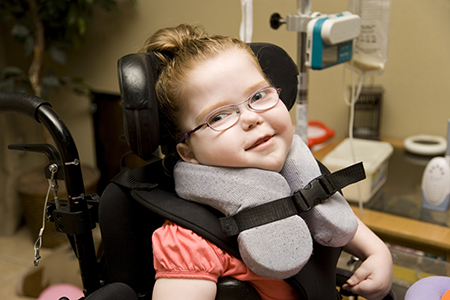Each October, we recognize the vital role that physical therapists and physical therapy assistants play in helping people decrease pain, improve their mobility and restore lost function. Physical therapists provide long-term individualized treatment for individuals with Alzheimer’s Disease, Cerebral Palsy, Down syndrome, developmental delay, spinal injury, Parkinson’s Disease, stroke and much more. Physical therapy is a key part of achieving long-term results for many conditions that limit an individual’s ability to move.
Physical therapists are licensed professionals who hold a master’s or doctorate degree in physical therapy. They work in a wide variety of settings, provide treatment in hospitals, rehabilitation clinics, out-patient facilities, schools and even in patient homes. Reasons for physical therapy are also widely varied, including injuries, disabilities, impairments, diseases, disorders and aging.
Within the physical therapy field, there are several specialty areas in which a physical therapist has received specialized training. Some of these specialty areas include:
- Orthopedic Physical Therapy. These physical therapists are trained to diagnose, manage and treat disorders and/or injuries that affect muscles, bones, ligaments and tendons. Orthopedic therapists are trained in the treatment and rehabilitation of post-operative joints, arthritis, sports injuries and amputations, among others.
- Geriatric Physical Therapy. These physical therapists develop individualized programs to help restore mobility, reduce pain and increase fitness among seniors. Common reasons for geriatric physical therapy include arthritis, osteoporosis, cancer, hip and joint replacement, balance disorders and incontinence, among others.
- Neurological Physical Therapy. These physical therapists work with individuals who have a neurological disorder or disease that causes paralysis, affects balance, impairs vision, causes difficulty walking and an overall loss of independence. Common diagnoses that can benefit from neurological physical therapy include Alzheimer’s disease, ALS, brain injury, Cerebral Palsy, Multiple Sclerosis, Parkinson’s disease, spinal cord injury and stroke.
- Cardiovascular Physical Therapy. These physical therapists are focused on increasing patient endurance and independence. Physical therapists who train in this speciatly treat those who have had cardiac or pulmonary surgery, as well as people who have cardiopulmonary disorders.
- Pediatric Physical Therapy. These physical therapists focus on improving motor skills, balance and coordination, and cognitive and sensory processing for children who have injuries, disorders or diseases that affect their muscles, bones and joints. Common reasons for pediatric physical therapy include developmental delays, Down syndrome, Cerebral Palsy and Spina Bifida, among others.
To find a physical therapist in your area, visit the American Physical Therapy Association for a national database of registered physical therapists and their specialties.
For more information, visit the American Physical Therapy Association, Family Fitness and Physical Therapy on About.com, who provided source information for this article.























How can I be sure that a physical therapist has a license to perform therapy on my family member in a nursing home?
Hi, my son has Cerebral Palsy he is 29 years old. We get supplies from Shield Health Care. He has Blue Cross Medical. If I want to ask somebody come to our home for therapy will be free. As I know 2014 he will have medicare. Please let me know if his doctor get authorization it will be free? Please let me know about it. My e-mail is aregerians@gmail.com. I am a mother who really take care of my son, but I know he needs therpist.